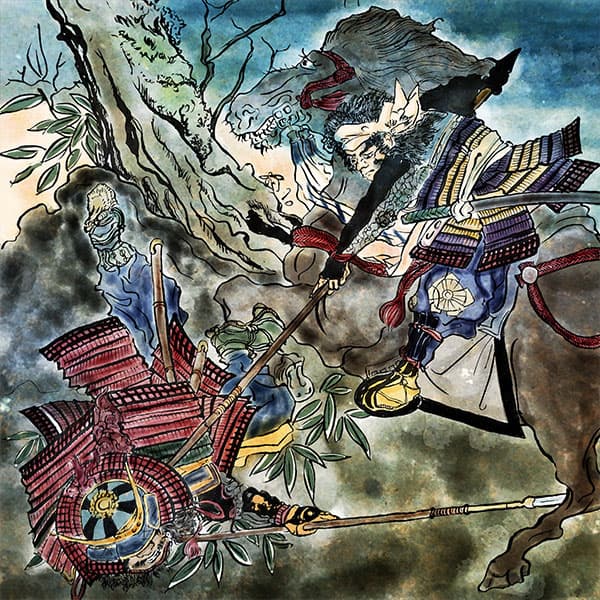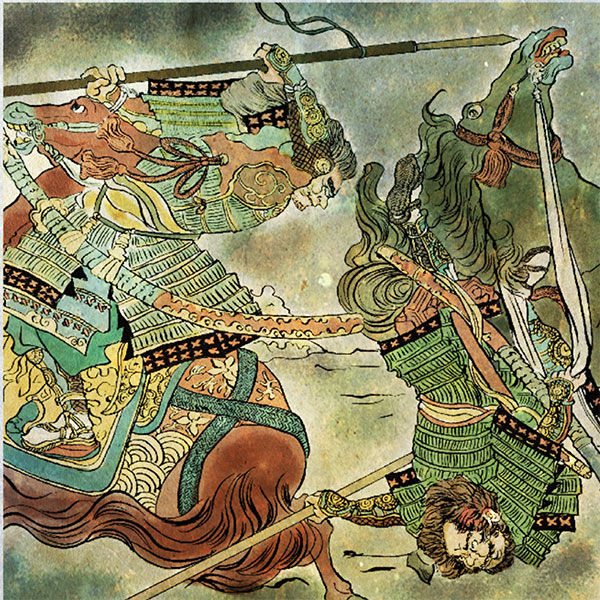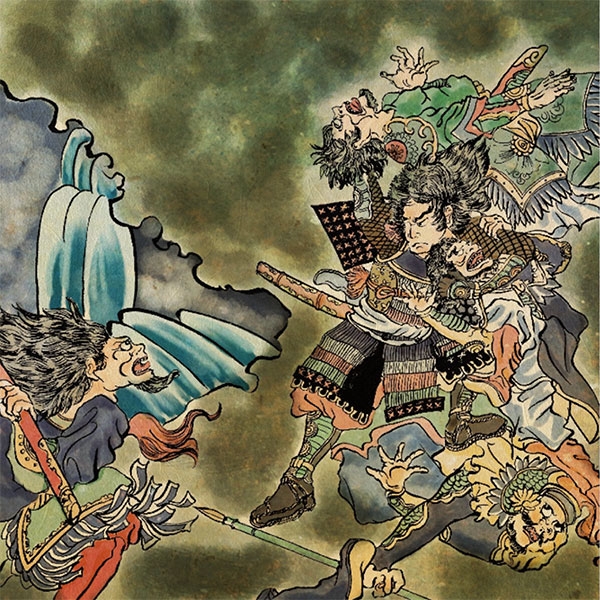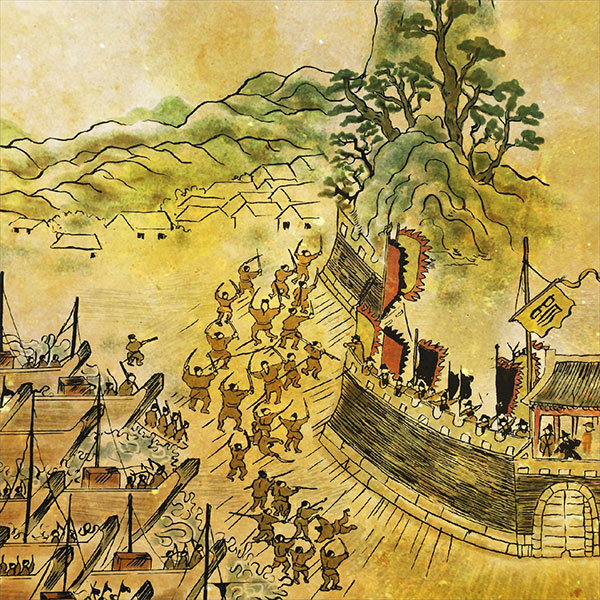Kiyomasa Kato (2/2)Seven spears of Mt. Shizugatake
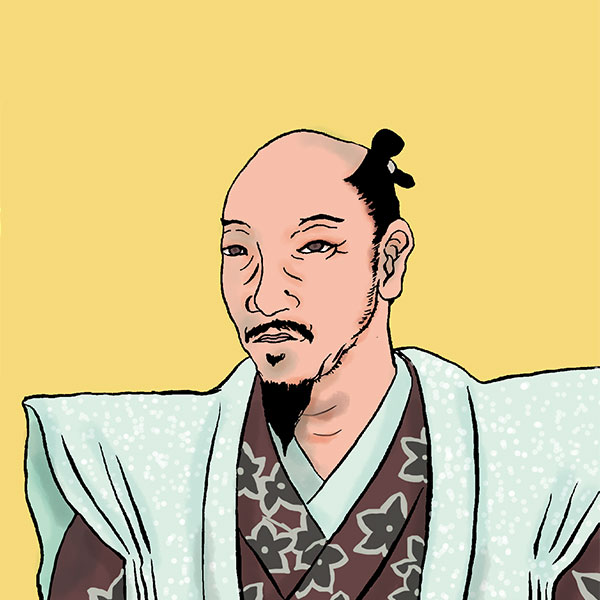
Kiyomasa Kato
- Article category
- biography
- name
- Kato Kiyomasa (1562-1611)
- place of birth
- Aichi prefecture
- Related castles

Kumamoto Castle
After Hideyoshi died in 1598, he approached Ieyasu Tokugawa, one of the five chief elders, and took Ieyasu's adopted daughter as his successor. Furthermore, on March 28, 1599, when Toshiie Maeda, who was one of the Five Elders and could rival Ieyasu, passed away, he attempted to assassinate Mitsunari Ishida as one of the seven generals, including Masanori Fukushima and Yukinaga Asano, but the attempt failed. As a result, he became even closer to Ieyasu.
However, it was discovered that Kiyomasa was supporting Tadamasa Ijuin, who had rebelled against the Ijuin clan, a senior vassal of the Shimazu clan, in the Shonai Rebellion. Since the Shonai Rebellion was an incident in which Ieyasu was trying to bring the situation under control as the Five Elders, Kiyomasa's actions were seen as a serious act of betrayal from Ieyasu's point of view. Ieyasu forbade Kiyomasa to go to Kyoto, and ordered Noriyari Arima to stop Kiyomasa from going to Kyoto.
The extent of Ieyasu's anger can be seen from the fact that he did not allow Kiyomasa to participate in the Aizu conquest and ordered him to stay in Kunimoto. During the Battle of Sekigahara in September of the same year, Kiyomasa was in Higo, his fiefdom, because he had been ordered by Ieyasu to take a de facto restraint.
It is also said that Kiyomasa strongly opposed Ieyasu's plan to conquer Aizu, and Ieyasu did not agree and became angry with Kiyomasa.
Due to these circumstances, it was assumed that Kiyomasa, who had become estranged from Ieyasu at the beginning of the Battle of Sekigahara, would join the Western army, and Terumoto Mori and others intensified efforts to persuade him.
However, Kiyomasa begged Ieyasu to send his vassals who were in Osaka to Ieyasu who was going to conquer Aizu, and when Ieyasu learned of the raising of an army by Ishida Mitsunari and others, he sent those vassals back to Higo and sent them to Kiyomasa's eastern army. I acknowledge your support.
In the meantime, Kiyomasa contacted Kuroda Josui and promised to cooperate with Ieyasu and the eastern army, and in late August, when his vassal carrying Ieyasu's letter returned to Japan, he went to battle with Kuroda's army, and attacked Yukinaga Konishi's Uto Castle. They captured and captured Yanagawa Castle under Muneshige Tachibana, and defeated Western forces in Kyushu one after another.
After the war, he was awarded the southern half of Higo, Konishi's former territory, as a prize for meritorious conduct, and became a daimyo with a wealth of 520,000 koku (actually 790,000 koku).
In March 1611, he mediated a reconciliation between Ieyasu and Toyotomi Hideyori at Nijo Castle. However, Kiyomasa attended the press conference not as a bodyguard for Hideyori, but as a bodyguard for Ieyasu's tenth son, Yorinobu Tokugawa, who had already been engaged to his second daughter, Princess Yaso, in other words, as a vassal of the Tokugawa clan.
After this press conference, he became ill on the ship on his way back home, and died in Kumamoto on June 24th. Passed away at age 50.
Although his third son, Tadahiro, succeeded him, the Kato family was abolished in 1632. Tadahiro was given 10,000 koku for his allowance and entrusted to the Dewa-Shonai clan. Tadahiro brought Kiyomasa's remains to Shonai Maruoka and erected a tombstone to the north of the main hall of Tenzakuji Temple of the Soto sect. This tomb was excavated in 1949, and bones and armor placed in early Yumino ware pots were discovered.
Tadatoshi Hosokawa, who became the new lord of Higo Kumamoto with 540,000 koku, entered Higo holding Kiyomasa's spiritual throne in front of him, and when he entered Kumamoto Castle, he said, ``I will take care of your castle grounds,'' and placed him at Joike Mausoleum. It is said that he worshiped from a distance in the direction of Kiyomasa, showing his respect for Kiyomasa.
Places related to Kiyomasa
- Kato Shrine, the grave of Kiyomasa
- This shrine is located within Kumamoto Castle in Kumamoto City, Kumamoto Prefecture, and the deity enshrined is Kiyomasa Kato. It was originally Jochi-byo, where Kiyomasa was enshrined after his death in 1611, and in 1614, Honmyo-ji Temple, which had been destroyed by fire, was moved to Jochi-byo.
In 1868, due to the separation of Shinto and Buddhism, rituals at Jochi-byo Temple began to be performed in a divine manner, and in 1868, the shrine was separated from Jochi-byo and Honmyo-ji temples, a shrine building was built within Kumamoto Castle, and Nishikiyama Shrine ( Nishikiyama Majinja). In 1962, due to road renovations, it was moved to its current location within Kumamoto Castle. - Myogyoji Temple, said to be the place of his birth
- This is a Nichiren sect temple located in Nakamura-cho, Nakamura-ku, Nagoya City, Aichi Prefecture.
It used to be a Shingon sect temple called Hongyoji, but it was converted to Nichiren sect and became Myogyoji.
When Nagoya Castle was being built in 1610, Kiyomasa Kato, who was ordered to construct the castle, received leftover materials from the construction and a hut, and is said to have moved Myokoji to his birthplace.
Treasures include the Nagaeboshikabuto helmet, the front of the helmet with the title written in Kiyomasa's own handwriting (Namu-myoho-renge-kyo), an image of Kato Kiyomasa wearing a belt (written by Hiyoka Shonin), and Kato Kiyomasa killing a tiger. such as folding screens.
In honor of Kiyomasa, who was also famous as an expert on horseback, he was also awarded an amulet for motorcycles. Kiyomasa Kato's birthday is held on July 24th according to the new calendar, and on the 24th of every month, the ``Kiyomasa Koreisai'' is held. - Statue of Kato Kiyomasa
- Kato Kiyomasa, who built Kumamoto Castle, which is considered one of Japan's three most famous castles, is still fondly known by Kumamoto citizens as Lord Kiyomasa.
There are two statues erected near Kumamoto Castle and at Honmyoji Temple.The statue of Kiyomasa near Kumamoto Castle is wearing armor and a long eboshi hat. With Kumamoto Castle, a fortress built during the Sengoku period, in the background, it looks like it is sitting in a battle camp, as if it is trying to protect Kumamoto.
In the surrounding area, there is the Civic Hall where plays and concerts are held, and the International Exchange Hall, which is a base for exchanges between foreigners visiting Kumamoto.Miyukizaka, which stretches behind the statue, leads into Kumamoto Castle. it is continuing. - Kiyomasa Well (Meiji Shrine)
- The spring water within the grounds of Meiji Shrine is called Kiyomasa Well, and is where the Kato family's Edo residence once stood. This Kiyomasa Well is a legendary well that is said to have been dug by Kiyomasa Kato at the beginning of the Edo period.It is said that if you take a photo of the well and set the image as your wallpaper, you will get unexpected effects, and it has become popular as a power source. It has become a spot.
After the Kato family was transferred, it became the residence of the Ii family of the Hikone domain, and Meiji Shrine was built in the Meiji period.
``There is no doubt that the Kato family's lower residence was there and Tadahiro, the son of Kato Kiyomasa, lived there, but it is not certain whether Kiyomasa himself lived there,'' Meiji Shrine explains.
Festivals related to Kiyomasa
- Kiyomasa Grand Festival
- It is held at Kiyomasa Kokakurinji Temple in Tokyo.
This festival is related to Kiyomasa Kato and is held during Golden Week in May.
He was awarded a kachimamori with leaves and irises in it, and it is a talisman with the meaning of ``winning in all battles, so that you can overcome suffering and be blessed with good fortune'', in honor of Kiyomasa, who had strong luck. Prayers are held for children's success in raising their children, and the festival is crowded with families with boys and fans of Sengoku military commanders. - Kiyomasa Festival
- It is held at Kato Shrine in Higo (Kumamoto Prefecture), where Kiyomasa ruled, and in the downtown area of Kumamoto City. On the fourth Sunday in July, a procession of shrines and over a dozen votive groups parade through the city carrying majestic mikoshi. On the Saturday of the week before the Shinko Festival, night stalls and stage events called ``Kiyomasako Night Market'' are held on the grounds of the shrine. The stylish ``Mikoshi Festival'' and the ``Sennin Kiyomasa,'' in which children dress up as Prince Kiyomasa, depart from the shrine and parade through the city. This festival commemorates the virtues of Kiyomasa Kato, a man beloved by the people of Kumamoto, and heralds the arrival of summer in Kumamoto. Even in the year of the earthquake, the event continued to be held as a catalyst for recovery.
Reread Kiyomasa Kato's article

- WriterTomoyo Hazuki(Writer)I have loved history and geography since my student days, and have enjoyed visiting historical sites, temples and shrines, and researching ancient documents. He is especially strong in medieval Japanese history and European history in world history, and has read a wide range of things, including primary sources and historical entertainment novels. There are so many favorite military commanders and castles that I can't name them, but I especially like Hisashi Matsunaga and Mitsuhide Akechi, and when it comes to castles, I like Hikone Castle and Fushimi Castle. Once you start talking about the lives of warlords and the history of castles, there's a side of you that can't stop talking about them.


